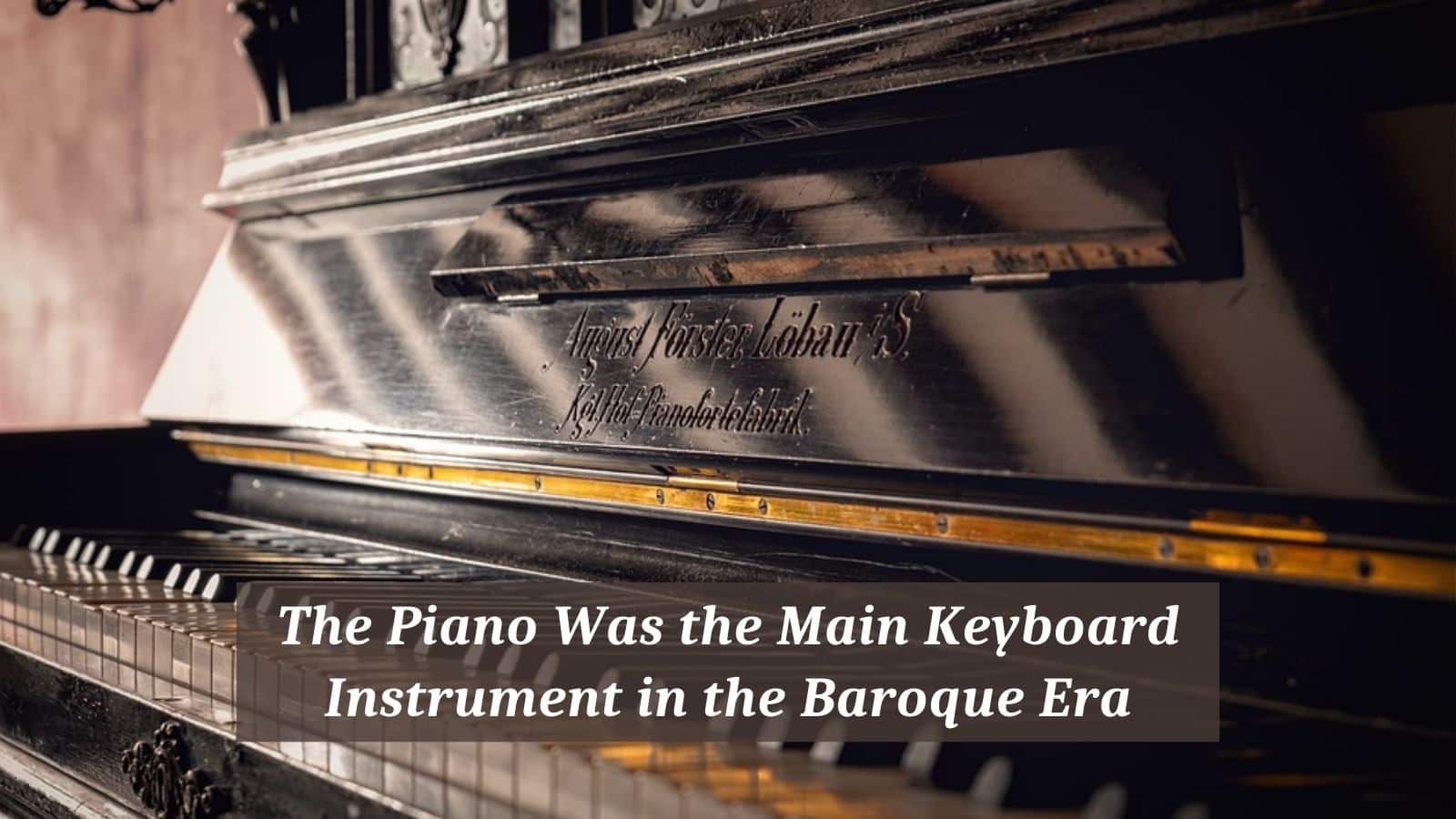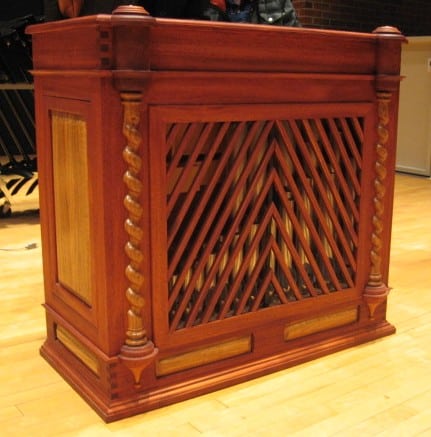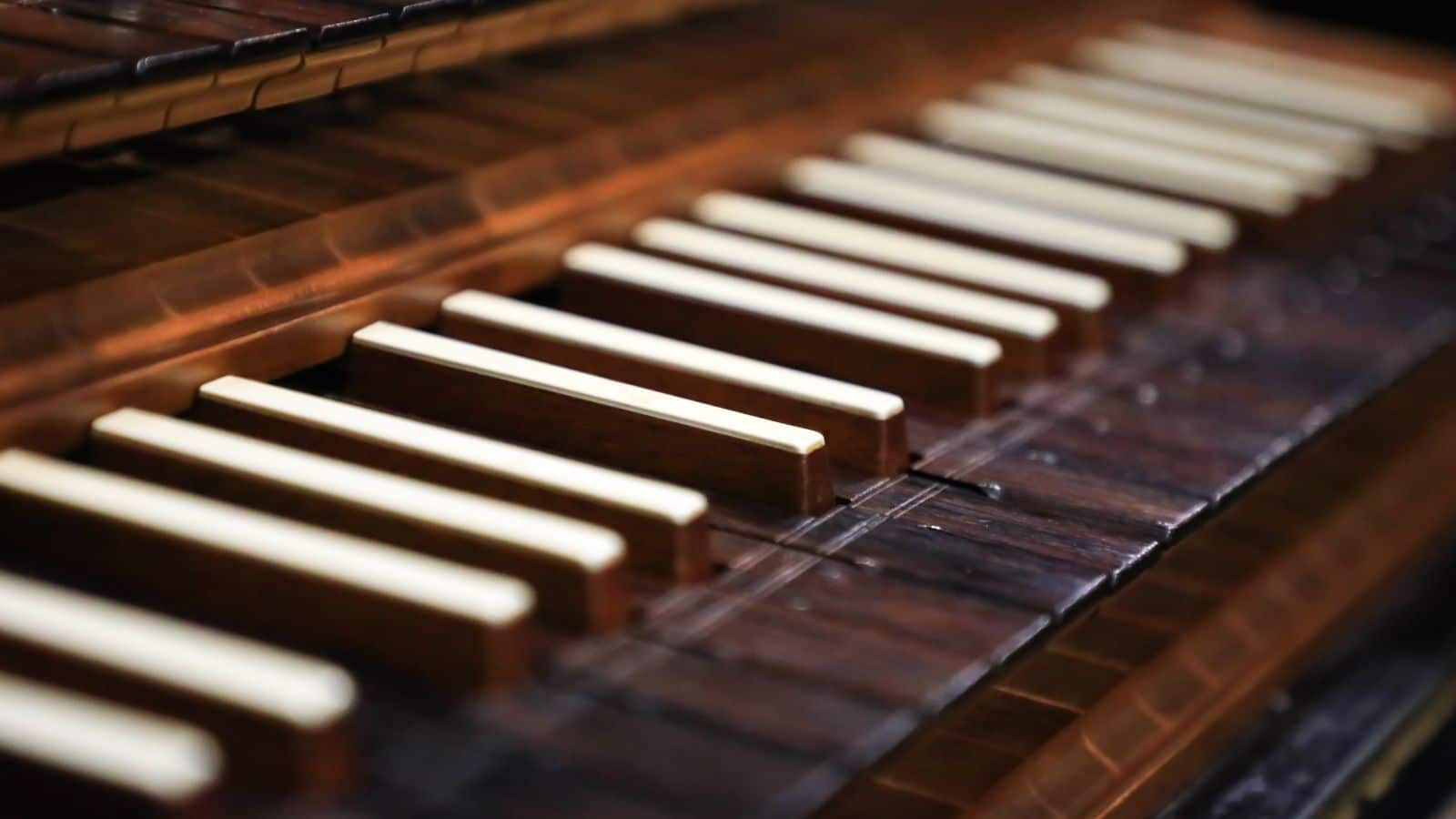It might be useful to frame the title of this article within its historical context. This way there is a better approach to exploring the title more closely.
The Baroque Era, or period of music is usually considered to cover a period from around 1600 up until 1750. It was a vibrant, prolific period of cultural history that absorbed the practices and conventions of the Renaissance and then took them in a whole new direction.
It was the period of music that saw composers such as JS Bach, Antonio Vivaldi, Claudio Monteverdi, Arcangelo Corelli and Alessandro Scarlatti become some of the most important creators to emerge from the era.
Developments in forms of music like the Oratorio, the Mass, the Cantata, Opera, Concerto, Sonata and Overtures were significant. Secular music began to take the lead from sacred music.
Alongside these came the creation of new instruments or developments in existing ones. These were to meet the demands of the composers and performers alike.
Keyboards were one of the instrumental groups that underwent significant development during this period. They formed the backbone of many ensembles providing together with a cello, what became known as a continuo.
The function of the continuo was as the name suggests, to play almost continuously, supporting the ensemble rhythmically and harmonically. The keyboards used for this role would have been primarily, the harpsichord, but also the virginal, spinet, clavichord or the organ.
Each of these keyboards developed from earlier incarnations in the Renaissance. They became increasingly popular, and well-made, eventually establishing themselves as an indispensable piece of musical hardware.
There were many reasons for this but the range of notes, around five octaves, plus the facility to act as accompaniment and solo instrument gave flexibility and created appeal.
The sound of these instruments enhanced and complimented existing instruments of the period. From the vast quality of keyboard music that composers wrote during the Baroque Era it is reasonable to think that was fashionable and prevalent.
If you take a look at a cross-section of keyboard compositions from the time period we’re considering you’ll find a tremendous amount of music composed for either organ or harpsichord.
Just the catalogue of keyboard works from JS Bach gives a clear indication of the widespread popularity of these two instruments.
Bach was not alone in his abundant keyboard collection, but the key aspect to remember is that these works were not for the piano or forte piano but the aforementioned harpsichord, spinet, clavichord or organ.
The Piano Was the Main Keyboard Instrument in the Baroque Era
The piano cannot be deemed to be the main keyboard instrument of the Baroque Era. Remember, the period of time we are delving into is from 1600 – 1750. The piano, as we’d recognise it today, did not come into existence until the very final years of the Baroque period.
Returning to JS Bach, for instance, he allegedly only played an early version of the piano in the final years of his life and was not overly impressed. He wrote no music for the instrument. WA Mozart purchased his piano towards the end of his life in the final decade of the 18th century.
We are often lulled into a somewhat false world when we hear earlier keyboard sonatas by WA Mozart of Joseph Haydn played all be it very beautifully, on a modern piano.
The strong likelihood is that up until the 1770s- 80s these works were intended for a harpsichord. That’s not to say these compositions don’t sound excellent on a piano, just that that was not the way the composers heard them themselves.
Why was this the case? Bartolomeo Cristofori did not create his version of the piano until around 1716, possibly later. Cristofori is given the enviable title of Father of the Piano, as he was the first to produce an instrument with a revolutionary new hammer mechanism.
This was to replace the method of tone production used in previous instruments that relied on a tangent (a small triangle of brass usually), fitted to a piece of wood that plucked the strings of the keyboard.
What Cristofori invented was remarkable. He intended to bring greater dynamic control to the performer as well as develop an instrument that had a richer sonority than the harpsichord.
Early attempts were met with moderate enthusiasm, but as his design improved and composers and performers could see, hear and feel the benefits of the piano, its popularity spread.
By the end of the 18th Century, the piano already had a solid foothold. The harpsichord, clavinet and spinets were relegated to the past.
The Baroque period transformed into the Classical Era around 1750-60. No exact date can be specified, these changes happened gradually not overnight. The Classical Era was the Era during which the piano became the firm favourite of composers, performers and audiences.
Whilst the closing decades of the Baroque Era the piano was already invented, it hadn’t established itself as a true rival to the earlier keyboards.
Some of the early Cristofori pianos were probably not overly impressive in terms of their sound quality, resonance and action, but Cristofori continued to refine his pianos right to the end of his life at the age of seventy-five.
There was no shortage of keyboard music or a variety of keyboards available to composers and performers in that most guilt-edged period of music. The Baroque composers created ornate, complex, majestic and enlightened music and made full and brilliant use of the harpsichord and organ.
In some ways, had the piano arrived fifty years earlier, it might have spoiled the intricate textures, the delicate and robust melodies in favour of something altogether different.
We may not have the works to enjoy that we do today as performing on the harpsichord for example is very different from performing on the piano. The two instruments are poles apart for so many reasons.
Instead, as we stream our music, place the stylus on the record or even slip a CD into the player, we can indulge in the music of the Baroque or the Classical, enjoying harpsichord, organ, clavinet and piano in their rightful historic place.



